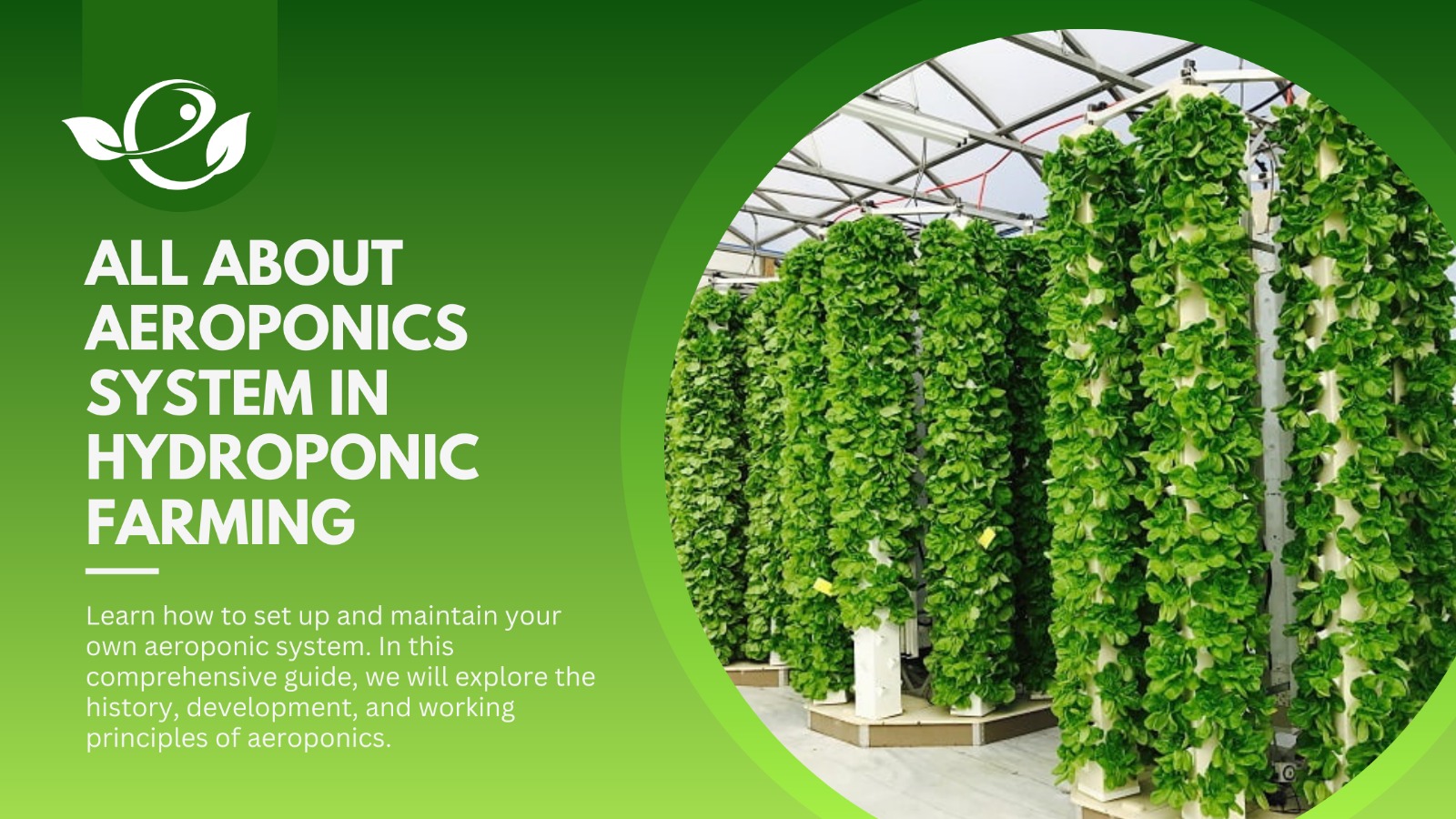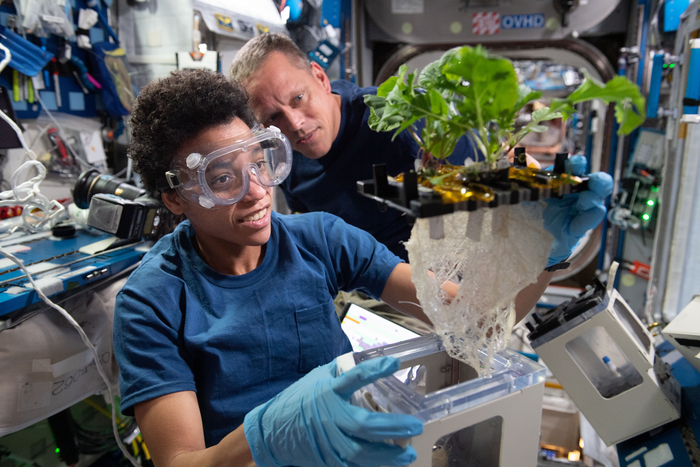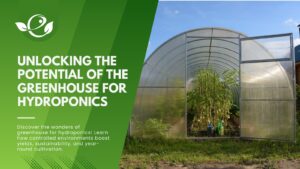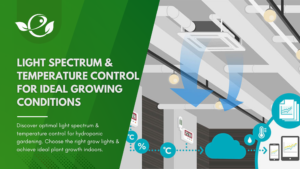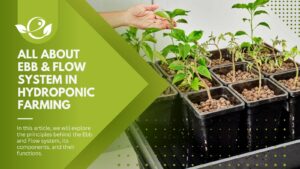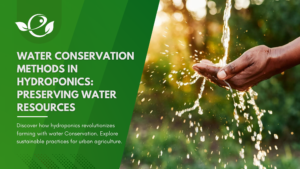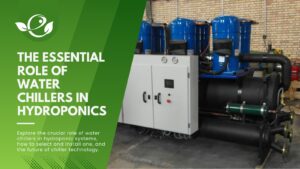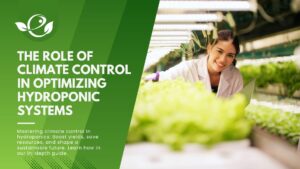Table of Contents
In the realm of modern agriculture, innovative cultivation methods have revolutionized the way we grow plants. Hydroponics, a soil-less method of plant cultivation, has gained immense popularity for its ability to optimize resource utilization and maximize yields.
Within the hydroponics family, aeroponics stands out as a cutting-edge technique that harnesses the power of mist and air. Derived from the Greek words “aero” meaning “air” and “ponos” meaning “work,” aeroponics represents a hydroponic method that suspends plant roots in a nutrient-rich misted or fogged environment, rather than submerging them in water. This innovative approach eliminates the need for soil, providing plants with an optimal growing environment while ensuring efficient nutrient uptake and abundant oxygen supply. By creating an atmosphere that nurtures the plants’ roots, aeroponics enables faster growth rates, increased yields, and enhanced resource efficiency.

In this comprehensive guide, we will explore the history, development, and working principles of aeroponics. We will explore how aeroponics differs from other hydroponic techniques and highlight its significance in revolutionizing plant cultivation. Additionally, we will provide a step-by-step guide for setting up an aeroponic system, discuss suitable plants for aeroponic cultivation, and delve into the crucial aspects of operating and maintaining an aeroponic garden.
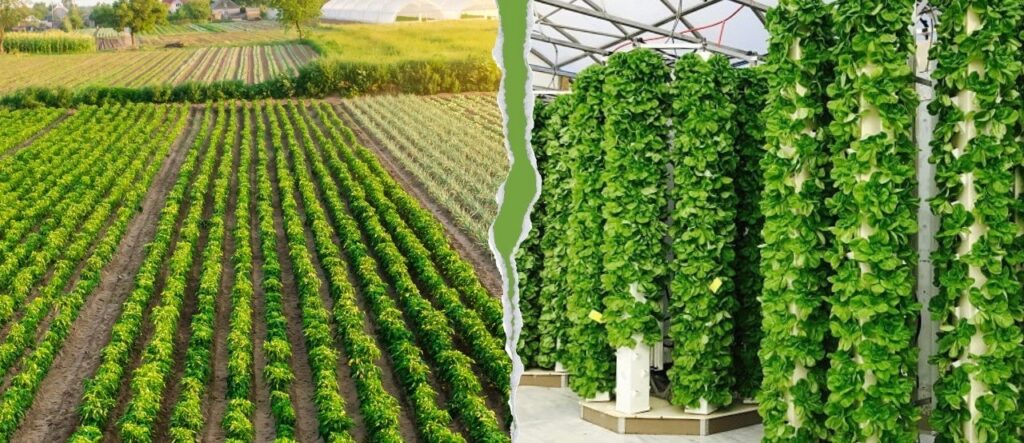
History and Early Development of Aeroponics
Aeroponics has a rich history that dates back to the early 1920s when it was primarily used for root growth studies in academic settings. Researchers recognized the potential of suspending plant roots in a misted environment, which allowed for better observation and control of root development.
In the late 1990s, NASA took a keen interest in aeroponics as a viable solution for space agriculture. The unique ability of aeroponics to provide nutrients and oxygen directly to the roots without the need for gravity appealed to scientists working on long-duration space missions. This collaboration with NASA significantly accelerated research and development in the field of aeroponics.
How Does Aeroponics Work?
Definition and Working Principle
Aeroponics can be defined as a hydroponic method that suspends plant roots in a misted or fogged environment rather than submerging them in water. The working principle of aeroponics revolves around the delivery of a nutrient-rich mist to the roots, ensuring oxygenation and preventing water logging. This mist, consisting of tiny droplets, bathes the roots, providing essential nutrients while maintaining optimal levels of oxygen.
Aeroponic systems offer several advantages over other hydroponic techniques. The increased oxygen levels in the root zone promote faster growth rates and encourage the development of healthier, more robust plants. The absence of soil also minimizes the risk of soil-borne diseases and allows for easier monitoring and management of plant health.

Differentiation from Other Hydroponic Techniques
While aeroponics falls under the broader umbrella of hydroponics, it stands out due to its unique characteristics and advantages. Let’s compare aeroponics with other popular hydroponic techniques, such as the nutrient film technique (NFT) and deep-water culture (DWC), focusing on the superior access to oxygen in aeroponic systems:
- Nutrient Film Technique (NFT):
NFT involves the continuous flow of a thin film of nutrient solution over the plant roots, creating a shallow stream. Although NFT provides some access to oxygen through the air gap between the nutrient film and roots, it doesn’t offer the same level of oxygenation as aeroponics. Aeroponics, with its direct misting of roots, ensures a consistent and abundant oxygen supply.
- Deep-Water Culture (DWC):
DWC immerses plant roots directly in a nutrient solution, allowing for continuous nutrient uptake. While DWC provides oxygen through air stones or diffusers, it still poses the risk of root suffocation due to limited oxygen diffusion in water. Aeroponics, on the other hand, guarantees ample oxygenation by suspending roots in a misted environment.
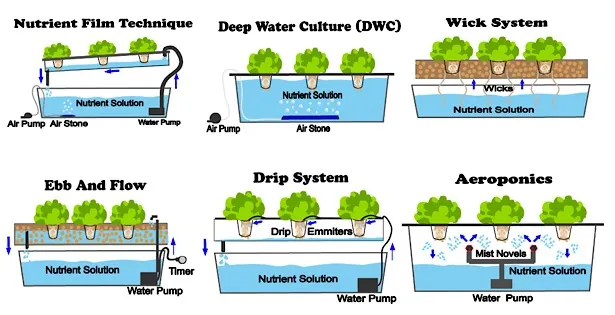
The superior oxygenation in aeroponics sets it apart, enabling faster growth rates, healthier plants, and increased nutrient absorption efficiency.
Setting Up an Aeroponic System
Key Components of an Aeroponic System
To create an optimal environment for plant growth, several critical components are essential in an aeroponic system:
Reservoir:
The reservoir holds the nutrient solution required for misting the roots. It should be large enough to provide a stable supply of nutrients and allow for easy monitoring and adjustment.
Pump:
A pump is responsible for delivering the nutrient solution to the misting mechanism. It ensures a steady flow of mist and regulates the frequency and duration of misting cycles.
Misting Mechanism:
The misting mechanism is designed to disperse the nutrient solution in the form of a fine mist or fog. It consists of misting nozzles, foggers, or ultrasonic transducers that break down the nutrient solution into tiny droplets.
Root Chamber:
The root chamber houses the plants’ roots and provides support while allowing the mist to reach the suspended roots. It can be a specialized chamber with individual plant sites or a customized structure based on the scale of your aeroponic system.
Nutrient Solution:
The nutrient solution is a vital element in aeroponics. It should be formulated with the necessary macro and micronutrients required for plant growth. The solution is circulated through the misting mechanism to provide regular nourishment to the roots.
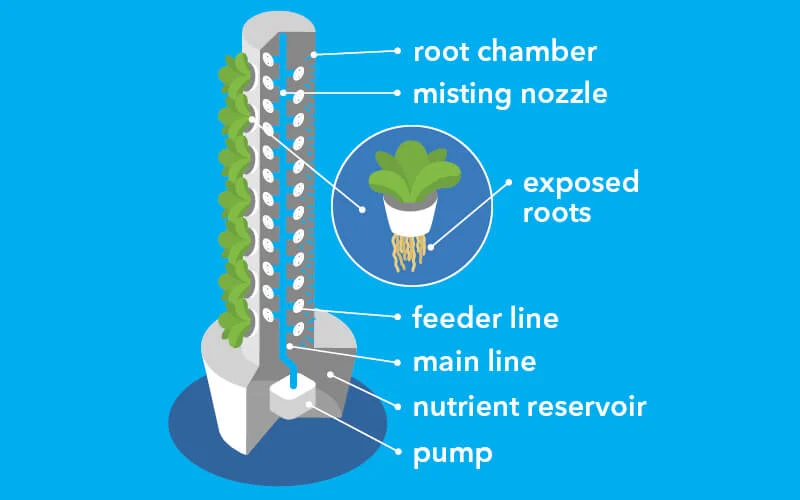
Each component plays a crucial role in maintaining a healthy and productive aeroponic system.
Designing and Building an Aeroponic System
Constructing an aeroponic system can be an exciting and rewarding process. Here is a step-by-step guide to help you design and build a basic aeroponic system:
Selecting Materials:
Choose high-quality materials that are durable and suitable for the scale of your system. This includes reservoir containers, tubing, misting nozzles or foggers, and a root chamber that can accommodate your desired number of plants.
Assembling the Components:
Set up the reservoir and connect the pump to the misting mechanism. Ensure proper alignment and secure all connections to prevent leaks. Place the misting nozzles or foggers in the root chamber, ensuring they are positioned to mist the roots effectively.
Water and Nutrient Circulation:
Set up the water and nutrient circulation system. The pump should draw the nutrient solution from the reservoir and distribute it through the misting mechanism. Ensure the flow rate and misting frequency are adjusted according to the specific requirements of your plants.
Testing and Calibration:
Before introducing plants, thoroughly test the system to ensure proper misting and nutrient circulation. Adjust the misting frequency, duration, and flow rate to optimize nutrient delivery and prevent over-saturation or under-misting.
Introducing Plants:
Once the system is calibrated and functioning correctly, introduce your plants. Gently suspend the roots in the root chamber, allowing them to be misted regularly. Monitor the system closely to ensure the plants are adapting well to the aeroponic environment.
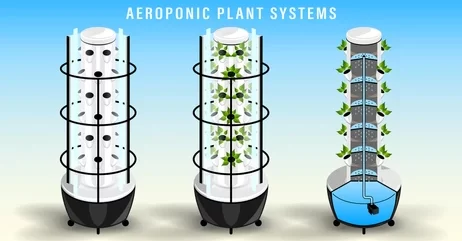
It’s important to note that the design and complexity of aeroponic systems can vary significantly based on the scale, purpose, and individual preferences. As you gain experience, you can experiment with different configurations and optimize your system for specific plant types or goals.
Which Plants Can Be Grown in Aeroponics?
Aeroponics offers a versatile platform for growing a wide range of plants, including leafy greens, herbs, and even root vegetables. However, some plants are better suited to aeroponic cultivation due to their growth characteristics and adaptability to the misted environment, others may require specific adaptations. Here are some plants suitable for aeroponic cultivation:
Leafy Greens:
Lettuce, spinach, kale, Swiss chard, and other leafy greens perform exceptionally well in aeroponic systems. Their fast growth rates and shallow root systems make them ideal candidates for this cultivation method.
Herbs:
A wide range of herbs, including basil, cilantro, parsley, mint, and oregano, flourish in aeroponics. The controlled environment and direct nutrient delivery promote robust growth and aromatic flavour development.
Microgreens:
Microgreens are young, tender seedlings harvested at an early stage. They are packed with nutrients and offer intense flavours. Aeroponics provides an excellent platform for cultivating microgreens due to the efficient use of resources and quick growth rates.
Strawberries:
Strawberries are a popular fruit crop that can be successfully grown in aeroponic systems. The suspended root environment allows for efficient nutrient absorption and supports the growth of healthy, productive strawberry plants.
Root Vegetables:
Although not traditionally associated with hydroponics, certain root vegetables can be grown in aeroponic systems with careful planning. Carrots, beets, radishes, and turnips can thrive when provided with suitable growing conditions and adequate support for root development.
It’s important to note that when cultivating root vegetables in aeroponics, special consideration should be given to the design of the system. Providing adequate space and support for root development is crucial. Some growers opt for modified systems with net cups or baskets to accommodate the growth of root vegetables. Careful monitoring of nutrient levels, pH, and moisture is also essential to ensure optimal root development and crop yield.
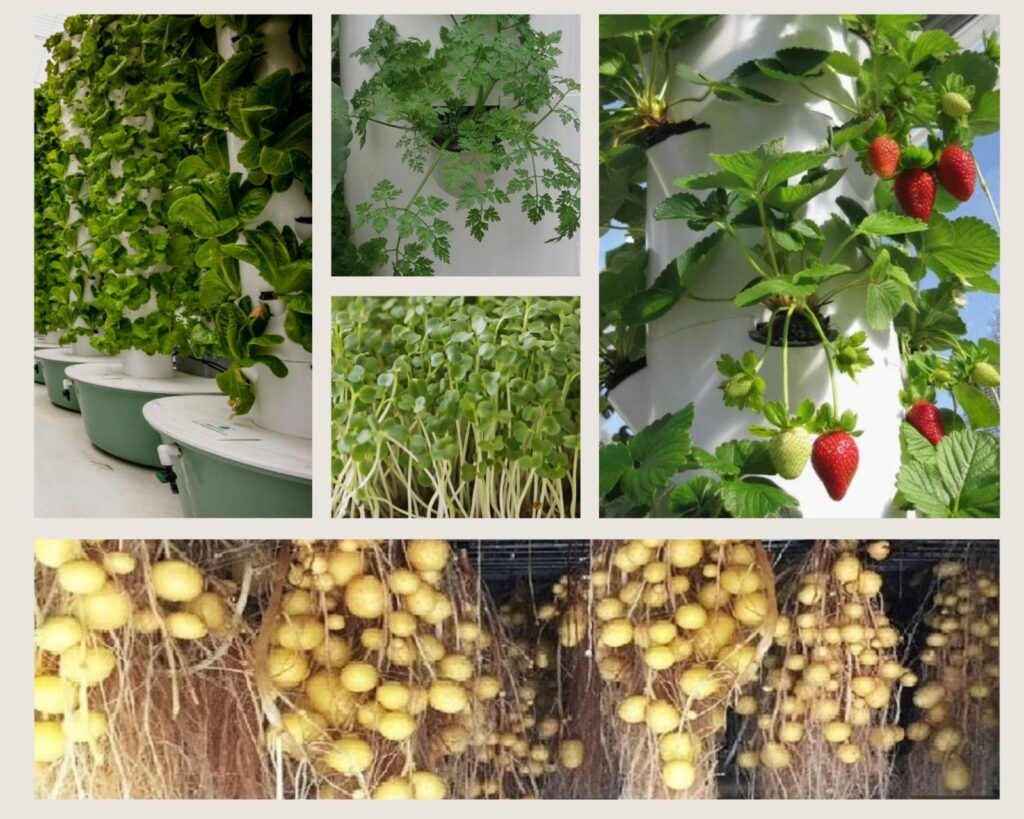
One of the significant advantages of aeroponics is the ability to cultivate high-value crops efficiently. Leafy greens, herbs, and microgreens can be harvested at their peak freshness, commanding a premium in local markets or restaurants. Additionally, growing these crops aeroponically requires fewer resources, such as water and space, compared to traditional soil-based methods, making it an economically and environmentally sustainable choice.
By exploring the possibilities and adapting techniques, aeroponic growers have successfully expanded the range of crops that can be cultivated in these systems. As research and innovation in aeroponics continue to evolve, the potential for growing a diverse array of plants, including root vegetables, will likely expand even further.
Operating and Maintaining an Aeroponic Garden
Environmental Control in Aeroponics
Maintaining optimal environmental conditions is crucial for the success of an aeroponic garden. Key factors to consider include:
- Temperature: Aim for a range of 18-25°C (65-77°F) to promote healthy plant growth.
- Humidity: Maintain a relative humidity level of 50-70% to prevent excessive moisture loss from plants.
- Light Intensity: Provide appropriate light levels according to the crop’s requirements, ensuring a balance between natural and artificial light sources. LED grow lights are often preferred for their energy efficiency and adjustable spectrum.
Regular monitoring and adjustment of these factors will create an ideal growth environment for your plants.
| Know more about “How to Choose the Best LED Grow Light for Your Plants“ |
Nutrient Solution and pH Management in Aeroponics
A balanced nutrient solution is vital for nourishing plants in aeroponic systems. Consider the following guidelines:
- Formulating Nutrient Solutions: Use commercial hydroponic nutrient solutions or formulate your own by carefully following the recommended ratios.
- Adjusting Nutrient Solutions: Regularly test and adjust the nutrient solution based on plant requirements and any observed deficiencies or excesses.
- pH Levels: Monitor and maintain the pH levels of the nutrient solution within the appropriate range for optimal nutrient uptake (pH 5.5-6.5 for most crops).
Keeping a close eye on nutrient solution composition and pH levels ensures that plants receive the necessary elements for healthy growth.
Routine Maintenance and Troubleshooting
To keep your aeroponic system in optimal condition, perform the following routine maintenance tasks:
- Cleaning Nozzles: Regularly inspect and clean the misting mechanism to prevent clogging and ensure consistent mist distribution.
- Checking Pump Functionality: Monitor the pump for proper operation and address any issues promptly to prevent disruptions in nutrient delivery.
- Inspecting Root Health: Routinely examine the roots for signs of diseases or nutrient deficiencies. Trim damaged or decaying roots to maintain plant health.
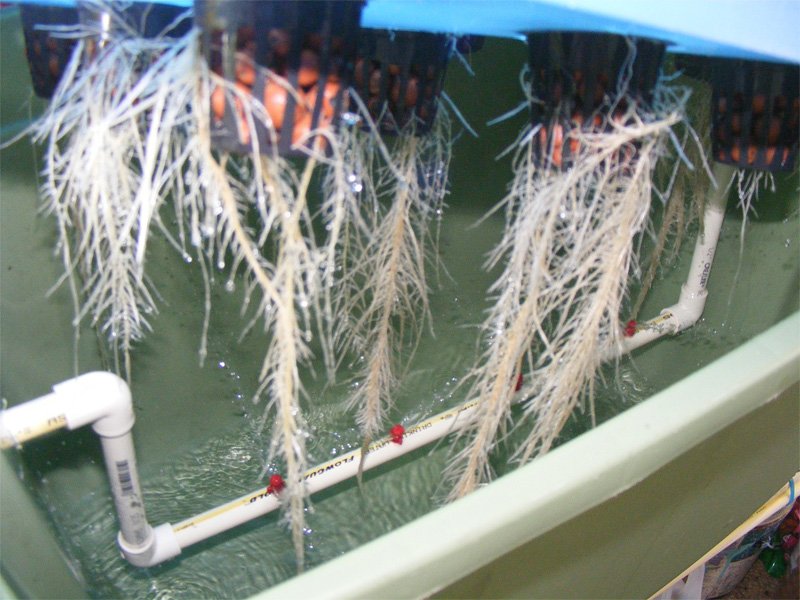
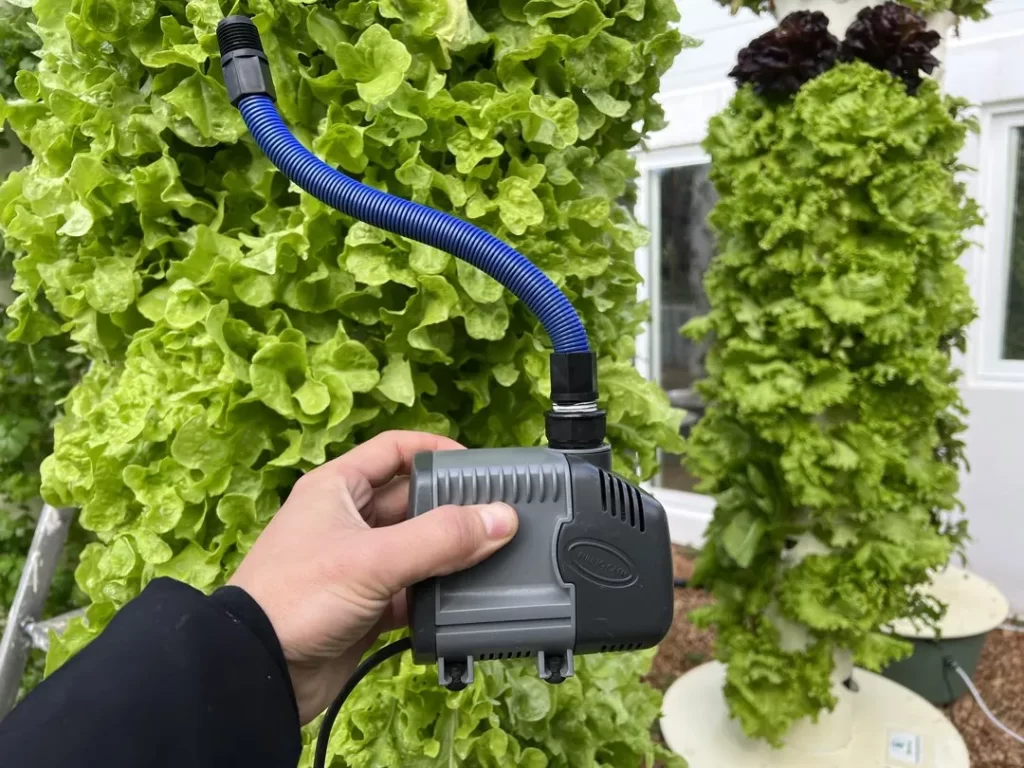
When troubleshooting aeroponic systems, common issues may include clogged nozzles, root rot, and nutrient imbalances. To address these challenges:
- Clogged Nozzles: Clear clogged nozzles using a suitable cleaning solution or soaking them in vinegar to remove mineral deposits.
- Root Rot: Ensure proper drainage and aeration within the root chamber to prevent excess moisture accumulation and promote healthy root development.
- Nutrient Imbalances: Adjust the nutrient solution composition according to crop requirements and test the solution regularly to maintain proper nutrient levels.
Pest and Disease Management in Aeroponics
Aeroponic systems provide inherent advantages in minimizing pest and disease issues compared to traditional soil-based gardening. However, it’s essential to be proactive in preventing potential risks. Consider the following measures:
- Organic Pest Control: Employ natural pest control methods such as introducing beneficial insects, using insecticidal soaps, or employing companion planting strategies to deter pests.
- Sterilization Techniques: Practice proper sterilization of tools, containers, and growing surfaces to minimize the risk of disease transmission.
- Beneficial Organisms: Introduce beneficial microorganisms, such as mycorrhizal fungi and beneficial bacteria, to enhance plant health and disease resistance.

Advantages and Limitations of Aeroponics
Advantages of Aeroponics
Aeroponics offers several key advantages that make it an appealing choice for modern agriculture:
Faster Growth Rates:
With increased oxygen availability to the roots, plants in aeroponic systems exhibit accelerated growth, allowing for quicker harvest cycles.
Improved Nutrient Uptake:
The fine mist in aeroponics ensures efficient nutrient absorption, leading to enhanced nutrient uptake and healthier plants.
Reduced Water Consumption:
Aeroponic systems utilize water more efficiently than traditional soil-based gardening, making them a sustainable choice for water-conscious growers.
Root Oxygenation:
The direct exposure of roots to oxygen in aeroponics stimulates root development and results in stronger, more resilient plants.
Increased Crop Yield:
By optimizing environmental conditions and nutrient delivery, aeroponics maximizes crop yield in a limited space.

Space Utilization:
Aeroponics allows for vertical farming, enabling growers to make the most of limited space and expand cultivation possibilities.
Year-round Cultivation:
With precise control over environmental factors, aeroponics enables year-round cultivation regardless of external conditions.
Challenges and Considerations in Aeroponics
While aeroponics offers numerous benefits, there are some challenges to be aware of:
Initial Setup Costs:
Setting up an aeroponic system may involve higher initial costs due to the required equipment and infrastructure.
Technical Complexity:
Aeroponic systems require careful monitoring and adjustment of various factors, such as nutrient composition, pH levels, and environmental conditions, which may be more complex than in some other gardening methods.
Precise Monitoring:
Maintaining optimal conditions in an aeroponic system requires regular monitoring of environmental factors and nutrient levels to prevent imbalances or deficiencies.
To overcome these challenges, it is crucial to plan carefully, seek knowledge and guidance, and gradually build expertise in aeroponic cultivation.
Advancements and Future Trends in Aeroponics
Technological Advancements
Aeroponics continues to evolve with advancements in technology, leading to improved efficiency, productivity, and accessibility. Some notable advancements include:

Automated Systems:
Automation technologies, such as sensors, actuators, and smart controllers, are being integrated into aeroponic systems. These systems can monitor and adjust environmental parameters, nutrient delivery, and misting cycles, optimizing plant growth and resource utilization.
Vertical Farming:
Vertical farming, which involves stacking multiple layers of plants in a controlled environment, is increasingly being combined with aeroponics. This approach maximizes space utilization and allows for higher crop yields in urban areas or limited land availability.
Remote Monitoring and Control:
With the help of IoT (Internet of Things) and cloud-based technologies, aeroponic systems can be remotely monitored and controlled. Growers can access real-time data, receive alerts, and make adjustments from anywhere, enhancing convenience and precision in cultivation.
Expansion of Commercial Applications
As aeroponics gains recognition and proves its viability, we can anticipate an expansion of commercial applications. Aeroponic systems are already being deployed in various settings, including indoor farms, research institutions, and vertical farming facilities. With advancements in scalability and cost-effectiveness, aeroponics is poised to play a significant role in future food production systems.
Conclusion
Aeroponics has revolutionized modern plant cultivation, offering a sustainable and efficient alternative to traditional soil-based gardening. With its roots in scientific research and advancements in technology, aeroponics provides growers with the tools to optimize plant growth, increase yields, and cultivate a wide range of crops in a controlled environment. By implementing the principles outlined in this comprehensive guide, you can embark on your aeroponic journey and experience the joy of growing healthy, bountiful plants throughout the year.
Frequently Asked Questions (FAQ)
1. Is aeroponics suitable for beginners?
While aeroponics may seem complex at first, it is certainly accessible to beginners. By following a step-by-step guide and understanding the fundamental principles of aeroponics, beginners can successfully set up and maintain their own aeroponic systems. Starting with smaller-scale systems and gaining experience gradually can help beginners become proficient aeroponic gardeners.
2. How often do I need to mist the roots in an aeroponic system?
The frequency of misting depends on various factors, such as specific plant requirements, environmental conditions, and the stage of plant growth. As a general guideline, misting cycles in an aeroponic system are typically set to occur every few minutes for a duration of a few seconds. However, it is essential to monitor the plants and adjust the misting schedule based on their individual needs.
3. Can I reuse the nutrient solution in an aeroponic system?
Yes, the nutrient solution in an aeroponic system can be reused. However, regular monitoring of the nutrient solution’s pH and nutrient levels is crucial. Over time, as plants take up nutrients, the solution may become depleted or imbalanced. To maintain optimal plant health, it is advisable to periodically replace the nutrient solution and adjust its composition based on the specific crop requirements.
4. Can I grow plants aeroponically indoors?
Absolutely! Aeroponics is well-suited for indoor gardening. By using artificial lighting systems, such as LED grow lights, it is possible to create a controlled environment conducive to plant growth. Indoor aeroponic systems offer the advantage of year-round cultivation, regardless of external weather conditions, making them particularly popular among urban gardeners and those with limited outdoor space.
5. Are there any organic pest control methods for aeroponic systems?
Yes, there are organic pest control methods suitable for aeroponic systems. Some options include introducing beneficial insects, such as ladybugs or predatory mites, to combat pests. Additionally, neem oil, insecticidal soaps, and botanical extracts can be used to control pest infestations. It is important to regularly inspect plants, maintain cleanliness in the system, and address pest issues promptly to prevent their spread.
6. Can I integrate aeroponics into a larger hydroponic setup?
Yes, aeroponics can be integrated into larger hydroponic setups, allowing growers to combine different cultivation techniques based on their specific needs and preferences. For example, one can incorporate an aeroponic system for growing leafy greens while using another hydroponic technique, such as Deep Water Culture (DWC), for growing vine crops. Such integration provides flexibility and the opportunity to diversify the crops grown.
7. Can I automate an aeroponic system?
Yes, automation is common in aeroponic systems and can greatly simplify the maintenance process. Using timers, sensors, and controllers, it is possible to automate tasks such as misting cycles, nutrient solution circulation, pH monitoring, and environmental control. Automation not only enhances efficiency but also ensures consistent and optimized conditions for plant growth. However, it is important to regularly monitor the automated system to ensure its proper functioning and make any necessary adjustments.
9. Can aeroponics be used for commercial production?
Yes, aeroponics is increasingly being adopted for commercial production due to its efficiency and productivity. The controlled environment and optimized growth conditions in aeroponic systems allow for consistent crop quality and higher yields. Moreover, the ability to stack multiple layers vertically further enhances space utilization, making it a viable option for maximizing production in limited areas.
10. Can I grow flowering plants or fruit-bearing crops in aeroponic systems?
Yes, flowering plants and fruit-bearing crops can be grown in aeroponic systems. However, these crops may have specific requirements, such as longer growth periods, different nutrient ratios, and adequate pollination. It is crucial to understand the specific needs of each crop and make necessary adjustments to the aeroponic system to support successful flowering and fruit development.
11. What are the energy requirements for operating an aeroponic system?
Aeroponic systems generally require energy to power components such as pumps, misting mechanisms, and lighting in indoor setups. The energy consumption will vary depending on the size of the system and the equipment used. Opting for energy-efficient components and utilizing renewable energy sources, such as solar panels, can help minimize the environmental impact and energy costs associated with operating an aeroponic system.
12. Can I use organic nutrients in aeroponics?
Yes, organic nutrients can be used in aeroponic systems. However, it is important to select organic nutrients that are soluble and compatible with misting systems. Organic nutrient formulations specifically designed for hydroponic or aeroponic applications are available in the market. It is recommended to carefully follow the manufacturer’s instructions and regularly monitor nutrient levels to ensure proper plant nutrition.
Disclaimer: The information provided in this article is for educational purposes only. Consult local experts and reputable sources before implementing any hydroponic system or making significant changes to your gardening practices.
